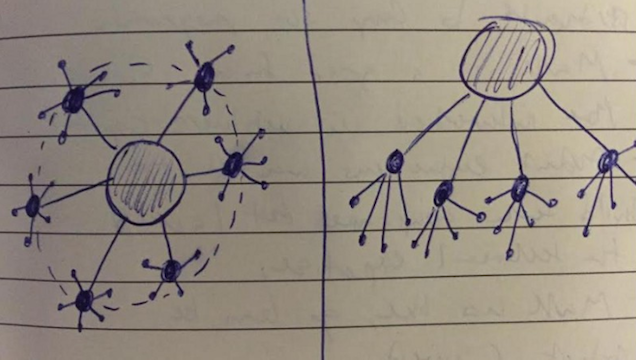
On Cultivating Startup Communities
"And who the hell invited Steve from accounting?"
We’ve all been invited to a party where the vibe was just a bit off. The wrong mix of people. A bad playlist. Store-bought appetizers that lasted about 30 minutes. The environment was such that people didn’t have fun, meet new people, or get down with their bad selves on the dance floor.
Bad parties are like bad startup communities. The wrong mix of people, content, and activities can be toxic.
At GlobalHack, we know that thriving startup ecosystems require three main ingredients: talent, product-first cultures, and density. In other words, get smart, driven, people together to build stuff. It’s that simple.
And yet, on a granular, more cellular level, micro-ecosystems require a very specific set of conditions in order to properly thrive.
What does community look like?
My freshman year in college, I was accepted in the Men-in-Engineering Learning Community (they had a female equivalent in the same building) at The University of Iowa. Like most college freshman, we entered the community as complete strangers — each with our own abilities, personalities, likes and dislikes. That first year, most of us on that floor had the same classes, the same professors, same schedules, same homework. We’d eat lunch together. Study together. Put on floor-wide LAN parties. Celebrated together after final exams.
By the end of the year, we weren’t just a random amalgamation of engineering students. We were a true community because we accomplished more (individually or as a group) together.
What does community look like in a thriving startup ecosystem?
- Providing feedback to another entrepreneur about their design mockup.
- Playing board games with other founders after you’ve worked a long, 12 hour day.
- Offering to grab coffee with an entrepreneur who’s new to your city.
- Sending a job description to a former founder who’s looking for their next startup gig.
Ownership
Startup communities cannot be built “by decree” in that they need to be formed and led by entrepreneurs. Too often, I’ve seen top-down or government-led initiatives around building a better startup community fail because they lacked a) entrepreneurial experience and b) rapport among the startup community.
Manage a co-working space? Consider forming an advisory group such that entrepreneurs are helping your space make decisions around programming, amenities, and membership.
Putting together a helpful resource for entrepreneurs? Put together a focus group and involving the decision-making process. You’ll have greater buy-in and adoption of your tool later on.
Structure
Moderation
Harking back to my party analogy earlier on in this post, good parties are somewhat selective with who they invite. I’m not suggesting that communities (online or otherwise) have to be exclusive in order to operate efficiently, I’m simply stating that communities need to be open, honest, and intentional about who their group is for (and conversely, who the group is not for). Guidelines (and in certain cases, rules) should be put in place such that content or individuals who are damaging to the community are managed properly. For online communities, this could look like a crowdsourced and agreed-upon Code of Conduct and for co-working communities, likely a member agreement.
Shared Successes & Failures
Running a startup can be incredibly lonely. While you might be able to avoid a politically-charged water cooler conversation, no one’s buying you a sheet cake for your birthday. No one’s going to pat your back when you closed that six-figure enterprise deal. Strong startup communities are connected in a such a way where employees at other startup companies become confidants, mentors, and even friends. While it’s just as important to share and celebrate successes, it’s even more important to connect with fellow entrepreneurs when you fail. Events like BYOF (Bring Your Own Fail) provide founders with a platform to share their shortcomings with their peers and, more importantly, learn from their mistakes.
Recycling
When startups do fail (most of them do), it’s important for them to recycle talent back into the ecosystem. Thriving startup ecosystems (especially Hub & Spoke models) allow for good people to work themselves back into the ecosystem when they get let go or their company fails. There are logical and visible “hooks” for these individuals to get plugged back in — to work for another startup company or to create something entirely new. This hook might take the form of a robust startup jobs board or an informal network of ‘connectors’ who know when new career opportunities present themselves.
In Conclusion
Startup communities are fragile. Like a plant, they require attention, care, energy, and can be easily poisoned. However, with proper fertilization, watering, and weed management, a few of your startup saplings will become towering trees in no time.
